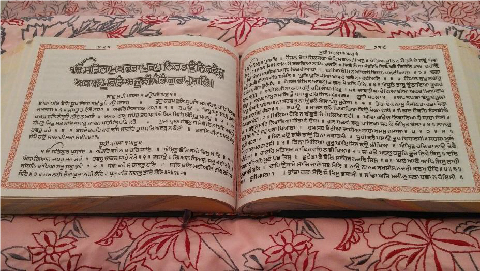
BHANA, lit. liking, pleasure, will, wish or approval, is one of the key concepts in Sikh thought. In Sikhism, it refers specifically to God`s will and pleasure. Raza , an Arabic term popular in the context of various schools of Sufi thought, also appears frequently in the Sikh texts to express the concept of UMArSA bhana. According to this concept, the Divine Will is at the base of the entire cosmic existence. It was His bhana, His sweet will which was instrumental in the world`s coming into being: "Whenever He pleases He creates the expanse (of the world of time and space) and whenever He desires He (again) becomes the Formless One (all by Himself)" (GG, 294).
Dard, Hira Singh, an eminent story writer, wrote with a reformatory attitude. He indirectly preached certain reforms keeping in view the realistic side of life. His story \'Rakhri\'1 is of this nature. The character, of the quarrelsome, rude and unlettered Rukmani—the heroine—making her home a hell and over hen-pecked nature of Daroga Prem Nath—the hero—are god realistic i portrayals but at the same time there is a implied suggestion of needed reform in both of them. His famous story \'Pir Gahlur Shah\' is a fine satire on the religious but blind faith of those people who, being uneducated, repose full faith in the hypocritical preachers.











